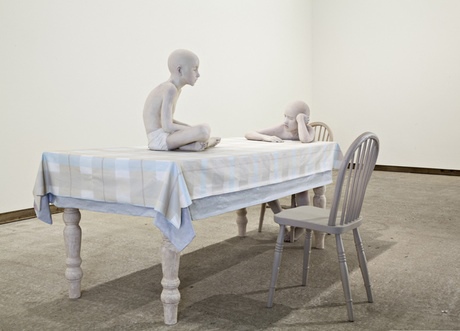Beautiful Science: Picturing Data, Inspiring Insight
British Library until May 26th
 | ||
| Circles of Life, 2013 © Martin Krzywinski |
'I was frustrated', said Martin Krzywinski, 'reading a lot of the scientific papers and not understanding what they were saying. I just wanted them to be simpler. There’s nothing I can do to make biology simpler, but I started telling people to make clearer figures'. When the tools for gathering data had outpaced those for portraying it, he developed Circos, an open source visualization tool that arranges tabular data in circular form. It was a simple idea, but transformative.
The British Library has set aside the Folio Gallery for a challenging and exquisitely beautiful exhibition of a journey from 17th century scientists' illustrated diagrams to up-to-the-minute interactive visualisations. Circles of Life illustrates the similarities between the human genome and those of other species, including chimpanzees and dogs. Each coloured square corresponds to a pair of chromosomes. Lines connect DNA sequences, visually depicting how much DNA we share with other species.
Recent years have unleashed a torrent of genetic data. Thousands of visualizations, with their distinctive aesthetic, celebrate the informational richness of our times.This may be, but there's a snag. The only one I could truly understand was a map of England showing the density of fast food outlets. The dark shaded-in areas were perhaps predictable but can you guess the areas which were almost blank? Cornwall and East Anglia. That I understand.
www.bl.uk/whatson/exhibitions/beautiful-science/
mkweb.bcgsc.ca
Nicola Davis writes in The Observer: www.theguardian.com/technology/2014/feb/16/visualise-data-change-life-florence-nightingale
Follow @9brandon on Twitter.










